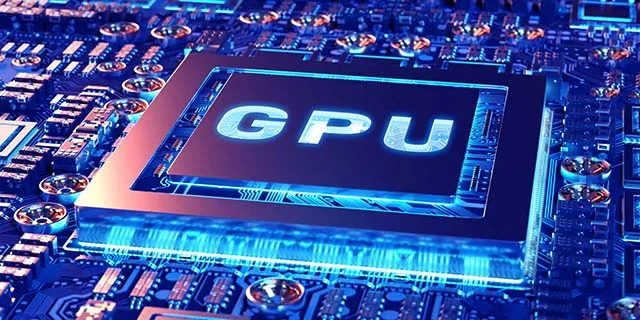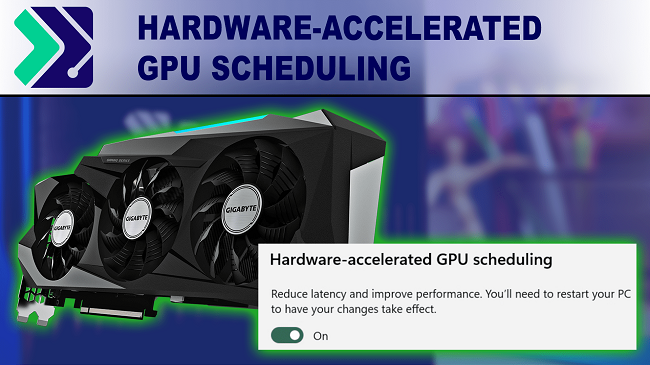Windows Hardware Accelerated Gpu Scheduling Crack Download
Download Windows Hardware Accelerated Gpu Scheduling Crack
Windows Hardware Accelerated Gpu A mysterious new optional feature called hardware-accelerated scheduling appeared on the advanced graphics settings page with the Windows 10 May 2020 Update. The purpose of this blog is to provide background information about this new feature and how we are rolling it out. It is intended for people who are interested in the internals of Windows. Staying at the forefront of hardware innovation has always been a critical aspect of our graphics platform. Hardware-accelerated GPU scheduling enables more efficient GPU scheduling between applications.
For most users, this transition will be transparent. It’s one of those things that, if we’re doing our job right, we’ll never know the transition has happened. Since the graphics platform is constantly evolving, this upgrade will enable new scenarios in the future.

Overview of hardware and GPU scheduling:
Almost 14 years have passed since the introduction of Windows Display Driver Model 1.0 (WDDM) and, with it, the introduction of GPU scheduling in Windows. Few people probably remember the days before WDDM, when applications could simply send work to the GPU as much as they wanted. They were sent to the global queue, where it was executed in a strict first-come, first-served manner. hardware accelerated These very primitive scheduling schemes were functional at a time when most GPU applications were full-screen games, running one at a time.
With the transition to a wide set of applications using the GPU for richer graphics and animations, the platform needed to better prioritize GPU work to ensure a responsive user experience. Thus, the WDDM GPU scheduler was born.
Over time, we’ve significantly improved the GPU scheduler at the heart of WDDM, supporting additional features and scenarios with each new version of WDDM. However, one aspect of the planner has not changed during its evolution. We’ve always had a high-priority thread on the CPU that coordinates, prioritizes, and schedules work assigned by various applications.
GPU scheduling win 10 hardware acceleration:
This approach to GPU scheduling has some major limitations in terms of dispatch overhead as well as latency for GPU work. This overhead was mostly concealed by the traditional application writing style. For example, an application would typically do GPU work on frame N and let the CPU run ahead and work on preparing GPU commands for frame N+1. This batch buffering of GPU commands allows the application to be sent only a few times per frame, which minimizes scheduling costs and ensures good CPU-GPU execution parallelism.
Effect of Buffering:
An inherent side effect of buffering between CPU and GPU is that the user experiences increased latency. The CPU receives user input during “frame N+1,” but the GPU does not render anything until the following frame. There is a fundamental tension between reducing latency and sending/scheduling overhead. They can send requests more frequently, in smaller batches, to reduce latency, or they can send larger batches of work to reduce dispatch and scheduling overhead.
GPU Caps Viewer:
GPU Caps Viewer is an impressive app that places the GPU in the field of view to get all the information you need and then runs a few demos to test how it performs on demand. You can run the OpenGL and OpenCL samples with different settings depending on each driver loaded. When you decide to start a test run, you can change the screen size along with the amount of demo anti-aliasing to see how the graphics card performs under load. It also has hyperlinks that will take you to websites where you can download the latest NVIDIA or AMD drivers to keep your computer running smoothly. Each record can be transferred to a TXT or XML document, which is useful for evaluation and analysis. You can also download Zero Install
GPU Caps Viewer has a conventional layout that doesn’t overwhelm you with unnecessary graphics components, which is ideal for a tool whose primary goal is to provide information. At the bottom of the primary screen, you can run many sample situations, regardless of which page is currently active. The degree of accuracy is astounding, with the ability to experiment, record data, and contrast with a wide audience. Considering all this, we can conclude that GPU Caps Viewer is useful software, especially for testing situations. You can also download Smart Fix Tool 2023.

Features: Windows Hardware Accelerated GPU Scheduling:
- Below are some noticeable features that you will experience after downloading GPU Caps Viewer for free.
- Get all the information you need, then do a few demos to test how it works on demand.
- Run the OpenGL and OpenCL samples with different settings depending on each driver loaded.
- Change the screen size along with the amount of sample antialiasing to see how the graphics card performs.
- The hyperlinks will take you to websites where you can download the latest NVIDIA or AMD drivers.
- It is possible to move each record to an XML or TXT document for assessment and analysis.
- Perform many sample situations at the bottom of the primary screen, regardless of which page is currently active.
- The degree of accuracy is astounding, with the ability to conduct trials, record data, and contrast with a wide audience.
Windows Hardware Accelerated Gpu Scheduling System Requirements:
- Before starting the GPU Caps Viewer free download, make sure your computer meets the minimum system requirements.
- Operating system: Windows XP/Vista/7/8/8.1/10/11
- Memory (RAM): Requires 512 MB RAM.
- Hard disk space: requires 20 MB of free space.
- Processor: Intel Dual Core or higher processor.
Windows Hardware Accelerated Gpu Scheduling Free Download:
Click the button below to start GPU Caps Viewer free download.
This is a complete offline installer and standalone setup for GPU Caps Viewer.
This would be compatible with both 32-bit and 64-bit windows.